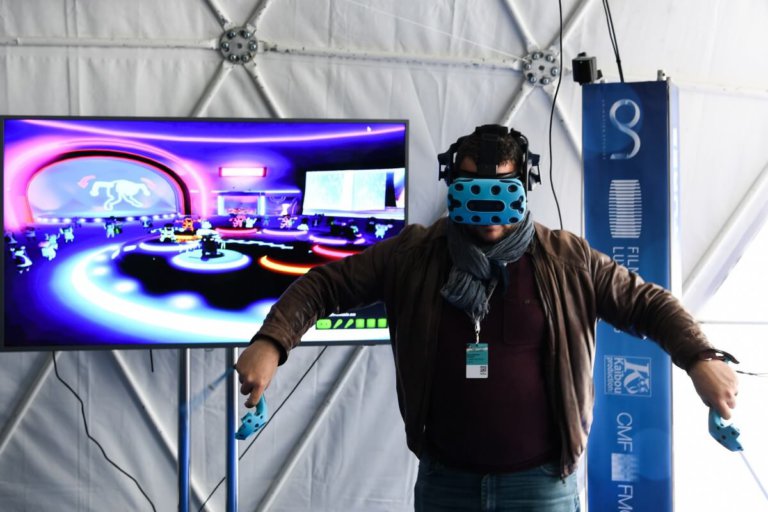
Immersive technology is blowing up everywhere, and that includes the higher education sector.
As augmented reality (AR) and virtual reality (VR) transform the way we shop, play games and even construct military strategies, universities are fielding increased demand from employers to produce graduates with the digital skills to work in this field.
With employers everywhere preferring tech-savvy workers, more unis are offering AR/VR courses at pre-university, undergraduate, and postgraduate level.
Yet, what are the key differences between the two?
Virtual vs. augmented reality

The popularity of virtual and augmented reality is rising. Source: Noah Seelam/AFP
If you’ve ever watched the 1999 movie “The Matrix,” virtual reality will spring to mind.
In the film, the virtual simulations are so lifelike that the main character couldn’t distinguish what is real and what is not.
As the digital age beckons, this is the exact same dilemma that we will soon encounter with virtual reality one day. Technology gets smarter and we get slower by depending too much on its capabilities.
A degree in virtual reality could us to level-up our digital skills and conquer computer-generated simulation before artificial intelligence (AI) outsmarts us.
Unlike virtual reality, augmented reality adds to the reality you would ordinarily see rather than replacing it.
You will recognise AR from apps like Snapchat and Instagram. Through the use of filters, you can see the real-life environment in front of you but with a digital augmentation laid on top.
For instance, you can insert a pair of cat ears on your head or go back in time by changing the colour of your screen to black and white. With AR, there are boundless scenarios to create. With VR, there are parallel worlds to explore.
What you can learn from a virtual and augmented reality degree

An VR/AR degree is valuable in today’s digital age. Source: David Becker/Getty Images/AFP
If you opt for a university-level virtual and augmented reality degree, you’ll discover a variety of subject areas.
The most common topics areas of this degree are:
- 3D character modelling
- Animation techniques
- Camera operation
- Computer programming
- Advanced game technology
- Storytelling and narrative development
- Soundscapes
Popular career paths of this degree area include:
- Virtual/augmented reality developer
- Computer vision architect/engineer
- C++/C# developer
- JavaScript developer
- Interaction engineer
- VR/AR designer
- 3D artist
- 3D modeller
- AR/VR writer
- Game developer/designer/programmer
- Rendering software engineer
- Sound designer
Most AR/VR degrees expect you to complete a practical project at the end of the year. This project may include an individual presentation of your graphic design work or a group initiative that involves the latest AR/VR tools.
The future is virtual

Take the first steps towards a fulfilling career in AR, VR or a related industry. Source: Fred Dufour/AFP
According to TechHQ, AR/VR is transforming the way we work.
The independent tech and news website highlighted recent research that estimates the global VR/AR market to reach upwards of US$35 billion by 2025.
Securing a degree in this sector is a smart career move to make as the market is growing, and new AR/VR roles will soon arise.
Liked this? Then you’ll love…
4 virtual music festivals UK students can still catch this summer
Does Virtual Reality technology help university students learn?







